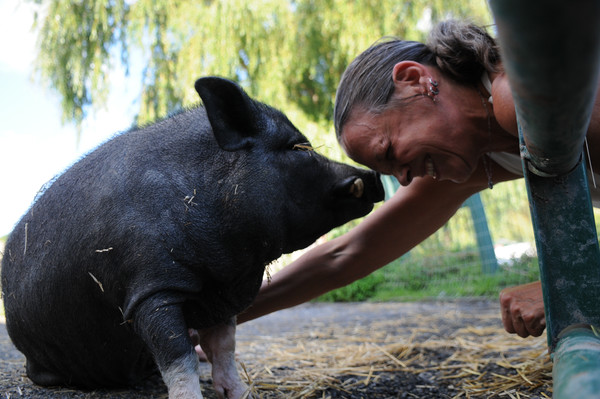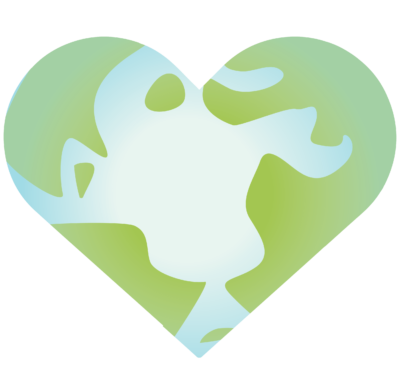I often find that I have to remind myself and others that “humans ARE animals.” Perhaps this is because we are so removed from nature that we have collectively removed the association between “human” and “animal,” as though humans are separate from animals. At what point did this happen, I wonder, and originally did it happen as a mechanism for survival, arrogance, or both?
There are different theories for the reasons and paths that led us to the denial of our “animal” nature which are interesting to investigate. And, what matters greatly in this moment is that we get back to earth and recognize and embrace our animal nature. What does that mean, you may wonder? Do I put leaves in my hair and mud on my face and run naked around a campfire? Well, I think one may do whatever one needs to do to get back to one’s animal nature, but that isn’t my first choice! An additional pertinent question is also the question: Why? Why embrace our animal nature?
First, let us take a superficial and cursory view of other animals in nature. I love being outside in nature. I love to garden and I love to know about other animals and plants. I guess I fancy myself a very amateur naturalist! In my limited learning about animals in nature, what I have come to understand is “there are ALL kinds!” For example, in the bird kingdom there are examples of infanticide, unfaithful partners, monogamy, cannibalism, fierce devotion to young, no association with young, and so on. And that is only within the bird kingdom. I like that example because many of us might consider birds, in a general way, as amazing, whimsical, innocent creatures (which they are!). Yet upon examination, within the species, there are many tendencies that might also be used to describe the “darker” side of human behavior.
Another example is an ant species that destroys everything around where it lives. When their colonies have depleted all resources, they leave and go live somewhere else, starting the process all over again. How “human” is that? Historically humans have done the same thing time and time again. The difference between the ant and human colonies is scale. In our case, we are able to decimate the natural environment on a much larger scale than do the ants, rendering large areas “uninhabitable” (e.g., Chernobyl, Fukisima, Easter Island, etc.). Another example is seen in nature with hamsters who live alone except when a mother gives birth and raises babies. But if under stress or living in a limited space (like a tank in Petco) or living together beyond infancy, a mother hamster will kill her own offspring. Jane Goodall, in her life long study of chimp behaviors, discovered that chimpanzees will “murder” their own kind, especially offspring. The world was shocked as our image of our fuzzy near-mammal brothers and sisters showed very violent behavior.
Studying the behaviors of all animals may lead to understanding that within the entirety of the animal kingdom (including humans), we find a full range of behaviors that reflect a range of emotions: greed, fear, hatred, violence, compassion, sympathy, stress reactions, community, solitariness, and so on. Why then, is it any surprise to find examples of all these behaviors within the human-animal kingdom? When we accept that we, too, are animals that exhibit a full range of behaviors, both acceptable and not acceptable, we are being honest. We are being “real.” My own method of embracing the animal nature of humans: Keep it real. Keep it in perspective. Remember.
Why reconnect with our own animal nature? I believe that it might be part of the cure of our disconnection from nature and a cure for our arrogance of speciesism where we find human beings considering themselves “higher” than “mere” animals. I know that if I were a bird, I’d be a swan; and if I were a different mammal, I’d be a vole based on what I know about their behaviors. I know that I have within me the capacity to accept all behaviors that manifest within the human animal species, even the horrendous or despicable behaviors, and behaviors that I myself choose not to exhibit. This outlook sows seeds of compassion within my worldview
In the practice of yoga, we learn that anytime we “push something away” or “run from aversion,” we are limiting ourselves. Master Patanjali says this tendency is an obstacle to experiencing yoga and uses the term dvesha (aversion) to describe our tendency to run away from things we don’t like. In order to overcome this obstacle, it requires “Self” awareness, not denial. So we don’t deny our animal nature, we embrace it, and when there are aspects of our own behavior that we don’t like, know that within us is the capacity for change. In moving through asanas, yoga postures that are the energetic essence of animals, we are remembering our affinity with all of our animal brothers and sisters. Our capacity to stretch our compassion, to return to unconditional love toward all beings while in a human-animal body, is the teaching of yoga.
Julie Kirkpatrick, yogi, artist, and teacher, has immersed herself in the Jivamukti Yoga Method of teaching created by David Life and Sharon Gannon. Julie completed the Jivamukti Yoga Teacher Training program and Advanced Certification Board. She is an awe-inspiring teacher full of motherly love and light very dear to the World Peace community.

